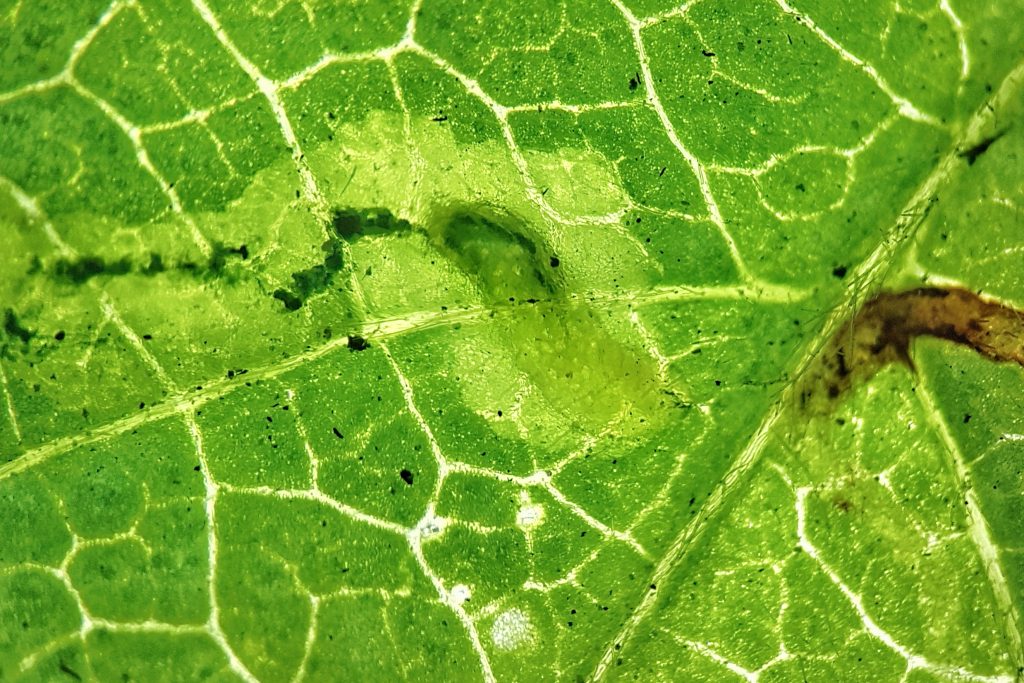We are two years into a Hort Innovation funded research project to prepare Australia for effective management of the vegetable leafminer (VLM, Liriomyza sativae), and our work has begun to culminate in a ‘surveillance toolkit’ — user-friendly resources that will help Australia prepare for potential incursions.
A new and destructive agricultural pest, VLM is a tiny ‘agromyzid’ fly with a taste for a wide variety of fruit and vegetable crops. It reached the Australian mainland in 2015, and has established in one of the northernmost communities of the Cape York Peninsula.
The surveillance toolkit will advise both government and industry stakeholders and will provide answers to two very important questions: how do we survey for VLM, and how do we diagnose suspicious damage?
How do we survey for VLM?
VLM has four life stages: egg, larva, pupa and adult. Female adults lay eggs inside a leaf, which hatch after approximately three days. The larvae then spend about a week feeding on the plant tissue beneath the leaf surface, creating the characteristic leaf mines, before emerging and dropping from the leaf and burrow into the soil to form pupae. Adults emerge from the pupae about nine days later.

Still, mines can be hard to spot, and an effective visual surveillance plan must take into account the effort needed to detect them.
So we have measured the ‘detectability’ of mines in vegetable crops by conducting mock-surveillance trials, where growers, agronomists and other industry representatives were invited to conduct short survey walks of crop rows, in which simulated mines were hidden.
We then validated these mock-surveys by running short surveys in gardens and weeds in the Torres Strait that compared the detectability of simulated mines with real VLM mines.
We found that mines have relatively low detectability, with most surveyors only spotting about 20% of the mines in a crop row. This means surveyors must spend enough time searching a given area to have a satisfactory chance of detecting a very low density of damage.
But even with a good survey plan that focuses on detecting mines, there is still a big problem that must be overcome — VLM is not the only fly that creates these leaf mines! In fact, there are several fly species in Australia that create indistinguishable mines on the VLM hosts.

Photo by Elia Pirtle, Cesar Australia 
Photo by Elia Pirtle, Cesar Australia
What’s more, leaf mines are often empty and there is no chance to collect a larva and rear it out to adulthood, or send it away for molecular DNA testing to confirm its species. So you can’t always determine whether you are looking at a run-of-the-mill Australian leafminer damage, or an incursion of the exotic VLM!
So how do we diagnose suspicious damage?
Fortunately, an empty leaf mine is not always what it seems!
After a leafminer larva has emerged from its mine, it leaves behind waste and cells, and cesar researchers have developed a novel molecular test to determine if suspicious damage was caused by VLM from these trace amounts of DNA.
Last year, tests conducted in the Torres Strait showed that VLM DNA can be detected in month-old empty mines, with a success rate of 73%.
This is very exciting news, as it dramatically reduces the amount of effort that would need to be spent searching damage for a live larva and subsequent diagnostic efforts. Instead, this method would allow surveyors to place leaves bearing mines straight into ethanol and then send to a lab for testing.
The VLM surveillance toolkits will be ready for release soon, so stay tuned for more updates!
Acknowledgements
This project is supported by funding from the vegetable R&D levy and the Nursery and Garden levy through the grower owned Research & Development Corporation, Hort Innovation. Project partners are: cesar, AUSVEG, Plant Health Australia, and the Northern Australia Quarantine Authority. Special thanks go to Nursery & Garden Industry Australia and the Queensland Department of Agriculture for their support.
Cover image: Photo by Elia Pirtle, Cesar Australia
